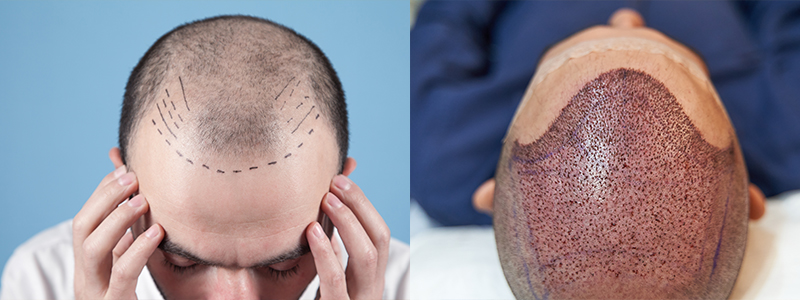The most common sites for harvesting donor grafts during hair transplant operations are the occipital and temporal areas of the scalp because they have a genetic resistance to miniaturization and balding. Donor grafts are extracted from these regions. Common recipient sites include the frontal hairline, crown, and top of the scalp.
Analyzing the hair transplant procedure
Recipient sites are prepared before hair transplant singapore by making tiny incisions or holes into which the harvested hairs will be inserted using a fine needlepoint instrument. Both donor and recipient sites are anesthetized locally during graft harvesting and implantation.
The aim during the extraction phase is to optimize the retention of live follicles. Also, the extraction process minimizes trauma to the surrounding structures while retrieving individual units through the FUE technique. Thus, technicians later sort out hairs depending upon each case so that one side looks natural.
During graft placement, checking up on the newly created incisions and selecting recipient sites based on angulations and the direction of terminal hair growth is essential. The implantation density will depend on the number of grafts available and the desired fullness. Small forceps or hypodermic needles gently insert individual follicle units into the incisions at the selected areas.
Patients should sleep with their head erect to avoid dislodgement of grafts. There should be no strenuous activities for three weeks, while regular hair washing can begin after three days, although care must be taken when washing through the areas around where the grafts were harvested.

There are some complications including bleeding, infection, and poor hair growth. Hypo-perfusion leads to patchy necrosis in case blood supply is not established or if they have been inadvertently damaged during implantation. Due to shock loss, some people, especially those with high-density hairs, may lose some native hair in the transplant area within days after surgery, but this is temporary only.
Therefore, graft survival is improved by proper aftercare. For graft uptake, the use of microneedling treatments may be beneficial. Since they protect surrounding follicles from strong DHT, weak indigenous hairs do not easily stand against the hormone.
Closing
It involves moving resistant follicles from the back and sides of the head to thinning areas and balding zones on top of the scalp. Over one year after surgery, graft survival and aesthetic outcomes depend primarily on skillful surgeons’ touch, delicate handiwork, and postoperative care given to any individual patient. Consequently, achieving a permanent natural appearing framework of hair coverage is possible following this surgical procedure.



